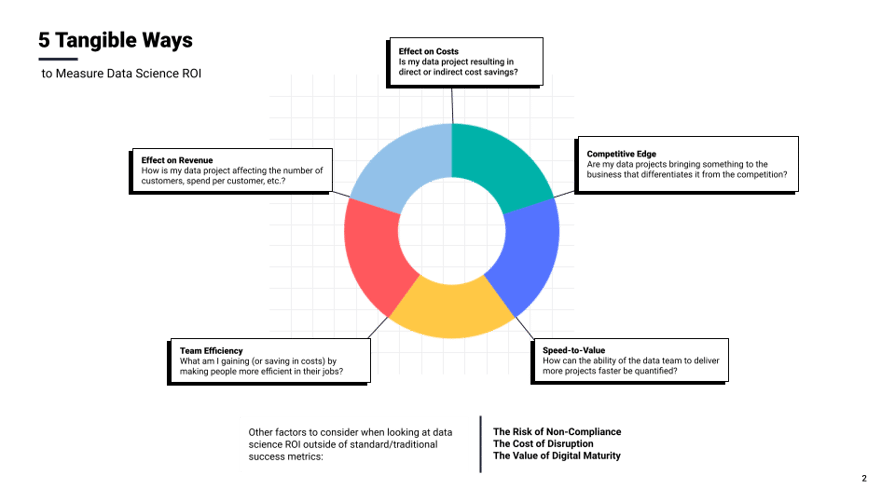When it comes to calculating return on investment (ROI), it always seems to be easier said than done — especially when it comes to measuring ROI for data analytics and AI initiatives. Businesses invest in data teams, infrastructures, and tools for all different reasons and are executing different projects at various stages of maturity, so it makes sense that it’s not a uniform calculation. Where should you start?
.jpeg?width=600&name=pexels-photo-209224%20(1).jpeg)
First things first: if you’re looking to start quantifying your investment in data with practical advice and step-by-step calculation worksheets, look no further — get the white paper The Data ROI Toolkit: How to Determine the Value of Your Data Initiatives.
Different Avenues to ROI for Data Analytics
The reality of measuring the return on investments in data teams and projects — and especially for data tools and technologies — can be particularly challenging. Therefore, the first step in calculating ROI for data analytics is to define “success” for the particular business and considering all the ways — both directly and indirectly — that data, or a data department, has made contributions. Value can come in many different forms, so part of the work involved is considering all the possible ways that data could be driving success.
Here are the top five ways to measure ROI for data analytics:
Non-compliance refers to not investing in data science more broadly or a data science platform specifically can increase the chances of a public relations frenzy (such as a data breach that compromises security and data) or fines due to regulatory non-compliance (such as with GDPR). The cost of disruption refers to keeping a pulse on the happenings across the data science, machine learning, and AI space so that organizations aren't left behind or lose employees to more cutting-edge companies. Lastly, digital maturity refers to the growing need for organizations to be able to demonstrate their prowess for data and analytics, which helps instill consumer trust.
Some of the key performance indicators regarding ROI for data analytics include time saved, reduced internal churn, lower production costs (which will vary by each data project), and enhanced customer relationships (think more loyalty, stronger levels of trust, and increased engagement).
How to Increase ROI for Data Analytics
One logical question after working out how to calculate ROI for data analytics, no matter the results of that calculation, persists. How can the business increase ROI from data science tools, platforms, technologies, projects, and initiatives?
The fact is that simply purchasing a tool or hiring a team to do data science will not magically bring ROI — there is no silver bullet. It takes organizational change (from high-level management down to each individual contributor) to get true value from data. An ESI Thought Lab survey on ROI with AI says, "With frequently high upfront costs in data preparation, technology adoption, and people development, it takes time and scale to generate significant returns. Just to reach break-even takes 17 months on average for the typical firm." Organizations should remain patient during the initial scaling phase before rushing to identify ROI from data analytics that may not have manifested yet.





